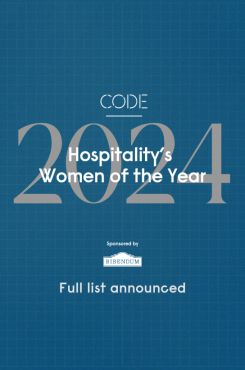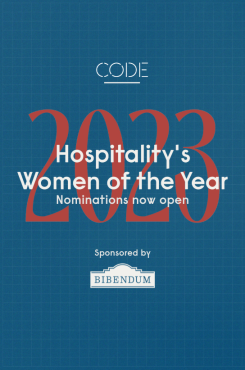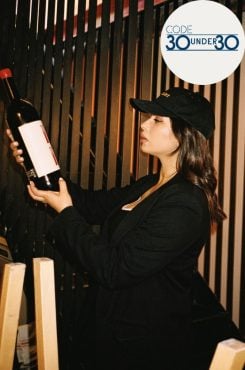A look at additions to Bibendum’s portfolio
Published 10 April 2020

When you work for a wine importer and distributor, there’s one big reason to be excited about the start of a new year – the launch of amazing new wines and producers. Elona Hesseling spoke to some of her ex-hospitality colleagues to find out their favourite new additions to Bibendum’s portfolio.
Bibendum sponsored content in collaboration with CODE Hospitality
Bibi Graetz | Tuscany, Italy
Chosen by Gergely Barsi Szabo
Originally a sommelier – and a journalist in a previous life – Gergely joined Bibendum after years spent at Gordon Ramsay group and a year detour at Sager and Wilde. He is now part of the Bibendum Fine Wine team and is very excited for Testamatta by Bibi Graetz to join the fine wine offer.
“The iconic Testamatta dared to differ in the early 2000s, when all the attention went to the so called ‘Super Tuscan’ wines,” Gergely says. “Instead of using the fashionable world varietals: Cabernet, Merlot etc, Bibi turned to the local varietals like Sangiovese, Colorino and Canaiolo from the best hilltop vineyards. The result is a super elegant and very complex wine with all the cherry avours of Sangiovese, plus the herbaceous notes of the Toscana landscape.”
In just two decades, artist-turned-winemaker Bibi Graetz has risen to become one of Tuscany’s most ingenious cult winemakers. Turning his back on both the constraints of the traditionalist Chianti DOCG, as well as the international varieties favoured by the Super Tuscans, his aim was simple: to make the best wines possible, from the best growing areas he could nd in Montepulciano. In his own words: “I don’t decide the flavour of the wines… the terroir determines that.”
Weingut Nittnaus | Gols, Austria
Chosen by Christina Schneider
Born where the Rhine and Mosel meets, Christina studied maths and started out as a professional horse trainer, but has spent the following 18 years working in hospitality, running both bars and restaurants in Berlin, Paris and London, notably at Happiness Forgets and Som Saa, before joining the Bibendum team. Christina’s pick is Weingut Nittnaus – “the perfect example of tradition and innovation going hand in hand”.
“My favourite new addition to the portfolio is probably the white Kalk & Schiefer by Hans and Anita Nittnaus,” Christina says. “The Nittnaus family has been making wine in the Neusiedlersee area for more than 300 years, yet Hans is one of the pioneers of biodynamic, terroir driven wines; moving away from overly extracted, super ripe oak bombs and towards fresh, elegant and immensely complex wines that showcase the place, the soil and the purity of fruit.”
“The 2018 Kalk & Schiefer (a blend of Welschriesling, Pinot Blanc, Grüner Veltliner and Chardonnay) is just stonking! Some skin contact and time on the lees add amazing texture and structure, and the crisp freshness makes it very quaffable.”
Ghost Corner | Elim, South Africa
Chosen by Julian Bicknell
First bitten by the wine bug in 2007, Julian graduated UCL with a geography degree in 2011. After a stint with online supplier of fine wines and spirits, Slurp, he joined the wine team at Hawksmoor Guildhall and within 6 months was managing the wine department at the newly opened Hawksmoor Air Street. Five years later, he made his way back to the supply side and joined the Bibendum team. Julian’s favourite new addition is the Ghost Corner ‘The Bowline’ Semillon / Sauvignon Blanc.
“David Nieuwoudt’s Elim project is incredibly exciting,” Julian says. “Vineyards located in Africa’s southern tip benefit from a cool climate, allowing incredible varietal expression. This 50/50 blend is vegetal, with asparagus and bell pepper notes and a freshness rarely matched in the Cape. It’s fantastic to have such a unique producer in the portfolio.”
Ghost Corner’s vineyards are situated in Elim, where high light intensity, cooling sea winds and lime-rich soils all combine to create a wholly challenging and unique terroir. The range is exceptional; powerfully concentrated and elegantly fruit driven. Winemaker David Nieuwoudt is no stranger to working in some of the most interesting and extreme corners of the country, also making South Africa’s highest altitude wines in the Cederberg.
For more on these and other new wines and producers, visit the Bibendum Wine website or get in touch| 0845 263 6924
This article was first published in Issue 22 of the CODE Quarterly magazine. To read the digital version, please click here




